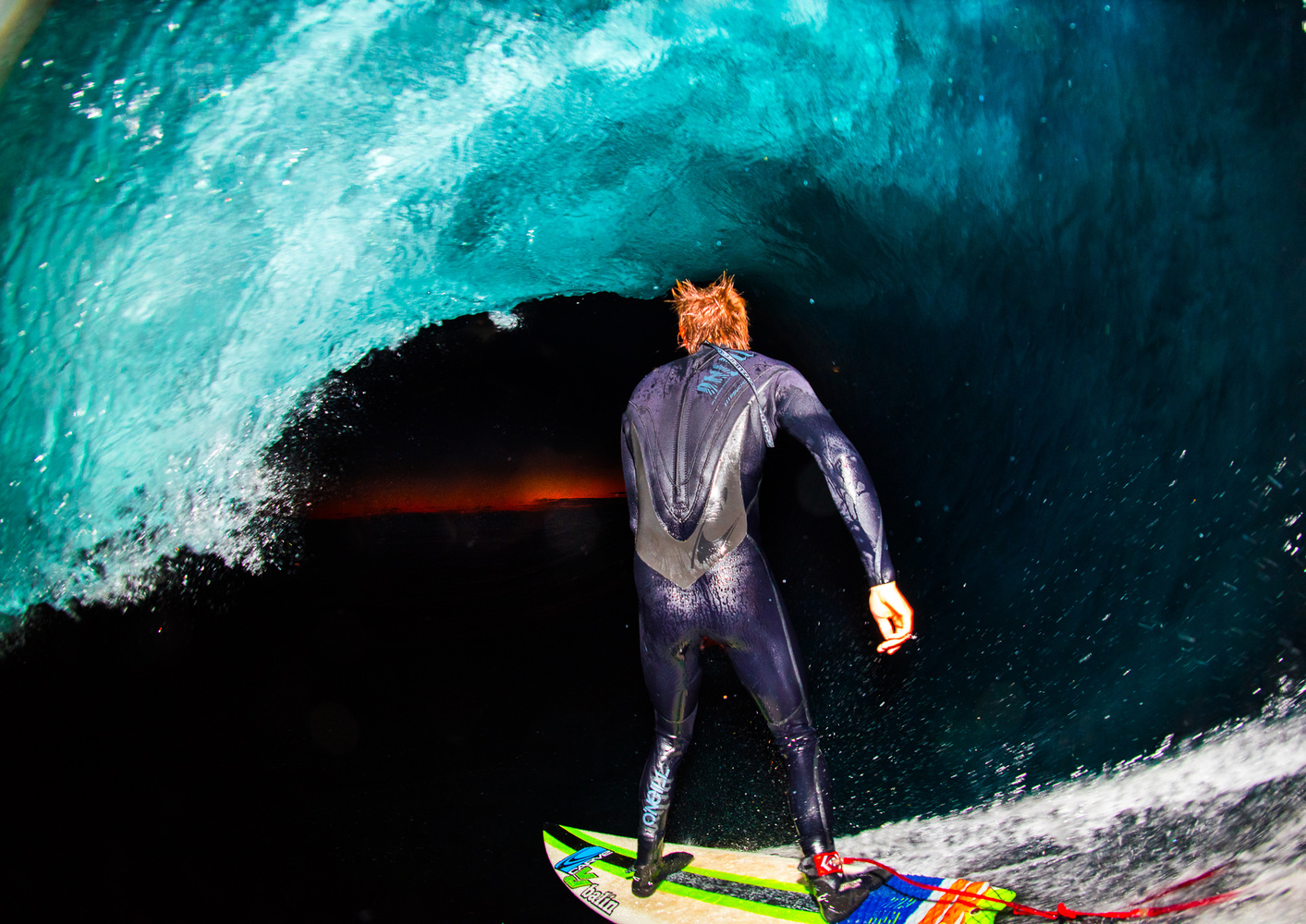Leroy Bellet is a 16-year-old freelance surf photographer from Australia who has recently been featured in several major surf publications because of his experimentation with artificial lighting in the water. Using a flash in the water allows the subject to still be illuminated while taking advantage of times when the natural light is most unique, like early morning, sunset, and night. We recently got the chance to talk to Leroy and learn a little bit about him and his technique.
Leroy got into photography three years ago and attributes his rapid growth to shooting in turbulent conditions. "I think when you are in chaotic situations in and around the water, you pick up on all the technical sides of it very quickly. If you can change your settings and stay composed while swimming and diving through waves, doing it on land will be a piece of cake."

The idea of shooting surfing at night is nothing new. Photographers have been using artificial light from boats and in the water for years; what makes Leroy's photos so unique is that he is right there in the wave with the surfer. Most surf photographers who shoot from the water sit in the lineup while wearing fins and position themselves to stay in the best part of the wave. Leroy gets towed into the wave by a jet ski and positions himself in the barrel to take photos of the main rider.
It is incredibly difficult to surf behind another surfer. On top of just surfing, I need to be paying attention to them, the wave, the camera, and taking the photo. There is a definite mental and physical strain when doing it repetitively.
Bellet uses an AquaTech Elite housing along with his Nikon D810, a Nikon SB910 Speedlight in an AquaTech NF-910 speedlight housing, and a Nikon Nikkor 16mm Fisheye lens. He tapes down the lens to keep the focus from moving when being thrashed around in heavy surf. According to Bellet, heavy wipeouts are a common occurrence.
The photo only turns out around 1 in 3 waves; so, there are a lot of unnecessary wipeouts, unfortunately. Counting back, it's been over 200 waves. Probably the best shot yet, of Russell Bierke, that ran as Surfing Magazine and Surfing Life magazine covers, was the last.
The project ran over the course of the three winter months in Australia. Bellet said that most of the time, he got injured before they even got the shot. They would end up shooting close to eight sessions through the early morning, midday, and after dark.


We asked Leroy to share some advice for anyone looking to get into surf or general photography. "My advice would be to spend as much time as possible playing with cameras and settings, show people what you are passionate about, and chase your wild, reckless, youthful ambitions — they are your main advantage." If you are interested in Bellet's work, you can check out his website, as well as this Double Tow Surf Photography video. If you have ever used a water housing or shot from the water, feel free to share your experiences in the comments section below.
Images used with permission from Leroy Bellet.






3 full power flashes in a burst? Can a Nikon flash really do that? (I shoot Canon, so I have no idea.) Please enlighten me.
Great article, and amazing images. This guy is really putting himself on the line to get the shots, his work stands out because of this. I Look forward to seeing more!
This guy has serious talent and balls! I'm a freelance surf photographer, shooting with similar equipment as Leroy. These arn't your every day waves he is shooting, they are heavy waves of consequence. To be surfing them behind someone is one thing, but to be surfing behind someone, with a heavy waterhousing in one hand knowing you are about to take a serious beating...now that is something! Hats off to you Leroy, you are pushing the limits of the sport and the photography that helps drive it! Big respect.
Exactly.
Having lived in Australia for three years, I can say that just getting in the water takes balls sometimes. And I've only shot a little P&S underwater camera off the coast of Cairns around that bit of coral.
pretty impressive to follow that close with all that gear...
but common, get a third guy in there and do some off-camera flash!
seriously though, I wonder if he could actually get bounce flash off the wave itself. I'm also guessing he's using FP-Sync (HSS) which is why he needs full power pops, I imagine it would still look great at 1/250, gaining a lot of power back which would be needed for the bounce.